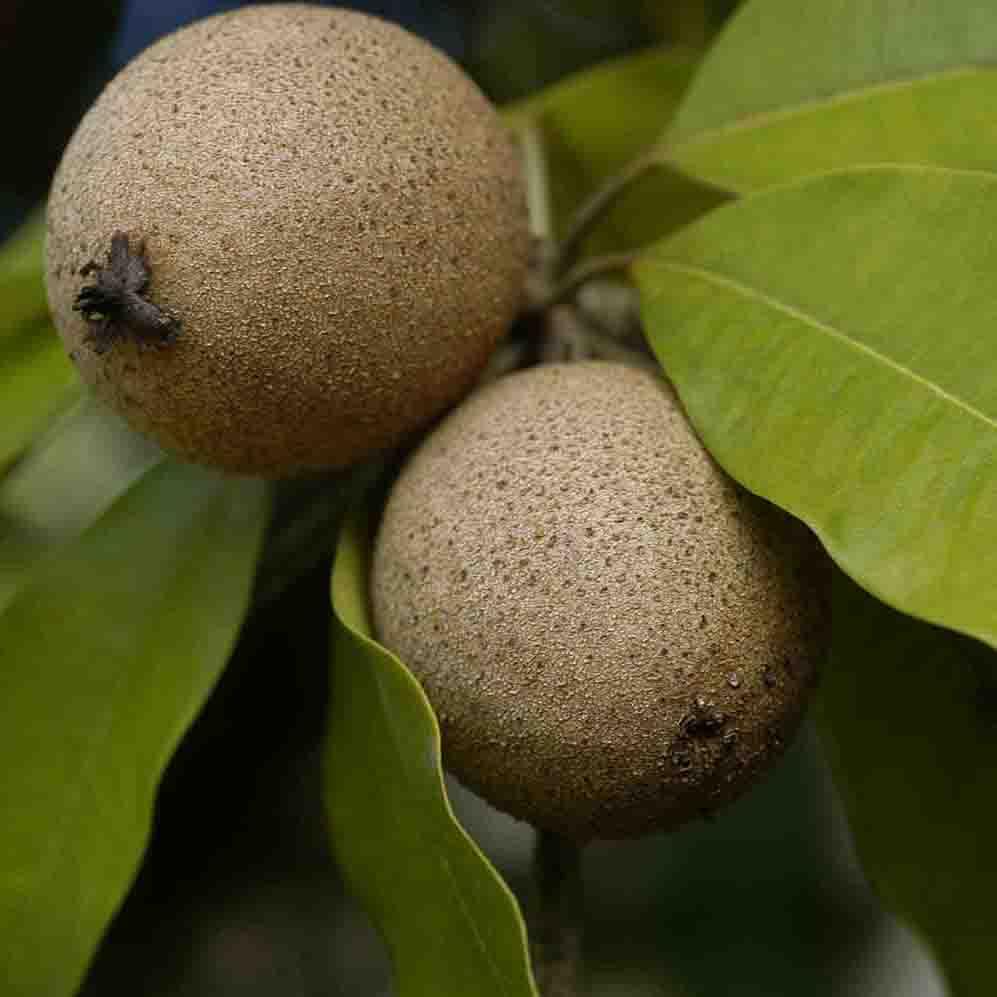Atulya Vanam's Mighty Sapota : Unraveling its Medicinal Marvels and Culinary Delights Across Healing Traditions
The Sapota tree (Manilkara zapota), often called Chiku or Chikoo tree, stands as a symbol of sweetness and nourishment.
Beyond its delectable fruit, this remarkable tree offers a plethora of therapeutic benefits through its leaves, fruit, bark, roots, and flowers. In this comprehensive blog, we embark on an enlightening journey to explore the multifaceted uses of the Sapota tree across diverse medical systems, including Modern Medicine, Ayurveda, Unani, Homeopathy, Siddha, and its diverse range of applications. Additionally, we delve into the distinct Sapota varieties thriving in India.
Medicinal Value
Modern Medicine:
Fruit (Sapota): Beyond its delightful taste, the Sapota fruit is a nutritional treasure trove, packed with vitamins, minerals, and dietary fiber that support digestive health and overall wellness.
Leaves: Sapota leaves contain potential bioactive compounds, which are being explored for their antioxidant and anti-inflammatory properties.
Ayurveda:
Fruit (Sapota): Ayurveda recognizes Sapota’s sweet taste and grounding qualities, often using it to balance vata dosha. It is considered nourishing, promoting strength, and enhancing vitality.
Bark: Sapota bark is valued for its astringent properties, which align with Ayurvedic principles. It’s used in traditional remedies to address diarrhea and dysentery.
Unani:
Fruit (Sapota): Unani considers Sapota fruit as a source of energy, contributing to overall well-being and vitality.
Homeopathy:
Fruit (Sapota): While not a primary ingredient, Sapota may be included in homeopathic preparations targeting specific symptoms or health concerns.
Siddha:
Fruit (Sapota): In Siddha medicine, Sapota’s nourishing nature is appreciated, believed to enhance energy and promote overall health.
General Uses
Culinary Delight: The Sapota fruit’s sweet and creamy flesh makes it a beloved ingredient in desserts, smoothies, ice creams, and jams.
Natural Sweetener: Sapota’s natural sweetness makes it a healthier alternative to refined sugars in culinary preparations.
Traditional Remedies: Sapota leaves, bark, and other parts may find use in traditional remedies for various ailments, including digestive issues.
Landscaping and Shade: The Sapota tree enhances green spaces, offering shade and beautifying gardens and landscapes.
Sapota Varieties in India
- Kalipatti: Renowned for its rich and sweet flavor, Kalipatti Sapota is commonly found in South India.
- Cricket Ball Sapota: Recognized for its shape, which resembles a cricket ball, this variety is cherished for its unique taste.
- Pala Sapota: Hailing from Kerala, Pala Sapota boasts a distinct taste and is often consumed fresh.
- Dwarapudi: Originating from Andhra Pradesh, Dwarapudi Sapota is valued for its juicy and flavorful pulp.
- Baramasi: Named for its ability to bear fruit throughout the year, Baramasi Sapota is treasured for its consistent supply.



More about Sapota
Sapota trees, also known as chikoo or sapodilla trees (Manilkara zapota), possess a range of extraordinary qualities that make them unique and valuable. Here are some intriguing facts about sapota trees:
- Ancient Roots: Sapota trees have a long history of cultivation, with evidence suggesting their presence in Mesoamerica over 2,000 years ago.
- Sweet and Creamy: The fruit of the sapota tree, commonly known as chikoo, is renowned for its sweet and creamy flesh, often likened to a blend of brown sugar and pear.
- Nutrient-Rich: Chikoo is a good source of dietary fiber, vitamins (such as vitamin C and vitamin A), and minerals (like potassium and calcium).
- Culinary Versatility: Chikoo can be enjoyed fresh, added to smoothies, ice creams, desserts, and even used as a natural sweetener in various dishes.
- Tropical Origin: Sapota trees thrive in tropical climates, with India being a major producer of chikoo.
- Long Harvest Season: Chikoo trees often bear fruit year-round, providing a consistent source of fresh and delicious produce.
- Medicinal Uses: In traditional medicine, sapota leaves and fruits are believed to have various health benefits, including aiding digestion and soothing coughs.
- Hardy Trees: Sapota trees are hardy and adaptable, making them suitable for a range of soil types and climates within the tropical belt.
- Sustainable Crop: Chikoo trees require minimal care and maintenance while providing abundant fruit, making them a sustainable option for local communities.
- Fruit Varieties: There are multiple varieties of sapota, each with its unique flavor, size, and texture.
- Artistic Connection: The sapota tree’s botanical name, Manilkara zapota, is derived from “manil-kara,” meaning “tree with sapodilla” in Spanish.
- Ornamental Value: Sapota trees have glossy green leaves and make attractive additions to tropical gardens and landscapes.
- Cultural Symbolism: Chikoo has cultural significance in various regions and is often used in traditional rituals, customs, and culinary practices.
- Culinary Heritage: Chikoo is celebrated in local cuisines around the world and is cherished for its natural sweetness and versatility.
- Folklore and Legend: In some cultures, the sapota tree holds mythical significance and is associated with stories and legends.
- Fiber and Timber: The sapota tree’s timber is used in crafting small wooden objects, and the latex obtained from its bark can be used as an adhesive.
- Propagation Methods: Sapota trees can be propagated from seeds, but grafted varieties are preferred for consistent fruit quality.
These extraordinary facts underscore the significance of sapota trees, not only for their delightful and nutritious fruit but also for their cultural heritage, adaptability, and potential contributions to sustainable agriculture. The chikoo tree serves as a reminder of the rich diversity of tropical fruits and their role in nourishing both body and culture.
Conclusion
The Sapota tree, a symbol of sweetness and sustenance, transcends its role as a fruit-bearer. Its leaves, bark, roots, flowers, and versatile applications interweave with a plethora of medical systems and cultural practices. From Ayurveda’s holistic wisdom to modern medical discoveries, the Sapota tree’s contributions flourish. By embracing the synergy of traditional knowledge and contemporary exploration, we unveil the myriad ways in which the Sapota tree enriches our lives—nurturing not only our bodies but also our cultural heritage and the natural environment.
